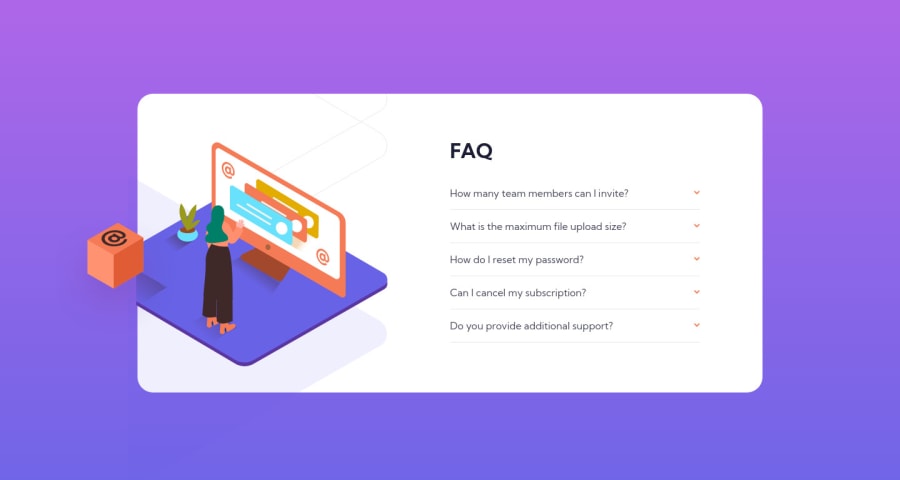
Design comparison
SolutionDesign
Solution retrospective
Any best practices that I need to follow for SASS/SCSS. Eventhough I am using SASS, I haven't extensively used it. Any suggestions to improve the SASS code to make it DRY. Anything that can be done to improve the handleClick function expression. I have used clip-path property to clip the desktop background pattern. Are there any other ways to do it ?
Community feedback
Please log in to post a comment
Log in with GitHubJoin our Discord community
Join thousands of Frontend Mentor community members taking the challenges, sharing resources, helping each other, and chatting about all things front-end!
Join our Discord
